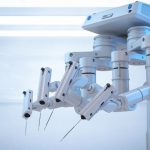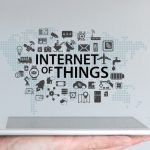A car delivered itself to a customer for the first time, marking a significant technological step for Tesla. Without human intervention or remote control, the vehicle drove directly off the production line at Gigafactory Texas and reached its new owner ahead of schedule. As autonomous systems expand in the automotive industry, Tesla’s achievement raises questions about logistics, safety, and the broader adoption of self-driving deliveries. While the company had previously run pilot Robotaxi programs with oversight, this delivery occurred with no one inside the vehicle. Concerns about regulatory approval remain, but this move suggests Tesla’s intent to further automate its supply chain and customer delivery process.
Other reports on Tesla’s autonomous advancements have focused on in-factory applications, where cars move independently from production lines to logistics lots. Recent news has also centered on the pilot launch of Tesla’s Robotaxi service in Austin, which operates under limited access and with safety monitors riding along. Until now, fully driverless vehicle movement on public roads had not been documented for direct customer delivery. The latest development represents a shift from controlled environments and monitored services to unaccompanied, real-world driving, illustrating faster progress than seen in updates reported over the last year.
How Did Tesla Achieve Driverless Delivery?
Tesla’s Head of AI and Autopilot, Ashok Elluswamy, confirmed that the car traveled at speeds reaching 72 miles per hour. The delivery utilized the company’s full self-driving capabilities, which had previously been tested in controlled settings such as parking lots and within factory grounds. According to CEO Elon Musk, “There were no people in the car at all and no remote operators in control at any point. FULLY autonomous!” This instance extended the company’s autonomous driving technology onto public highways, transitioning from earlier short-range logistical applications to actual customer fulfillment.
What Sets This Delivery Apart from Robotaxi Launches?
Unlike the recent Robotaxi Early Access Riders Program in Austin, where Tesla implemented a Safety Monitor in the passenger seat, the self-delivered vehicle operated independently from pickup to drop-off. This distinct difference underscores a level of readiness in the self-driving stack that goes beyond pilot rides. While Robotaxi introductions covered a limited geographic area with human oversight, this new method points to a possible future where end-point deliveries might become autonomous and routine, at least in geographically contained regions near Gigafactories.
Will Autonomous Delivery Become Standard?
Tesla’s current plan, as communicated by Musk, is to scale autonomous delivery regionally before considering more widespread deployment. The existing infrastructure relies on haulers transporting cars to local centers, but self-driving delivery would bypass a critical logistical link. While regulatory and technical hurdles remain, Tesla envisions a system where most customer deliveries do not require driver involvement, potentially reducing delivery costs and complexity. Wider adoption will depend on continued validation, as well as consumer and regulatory acceptance.
The trajectory suggested by Tesla’s first self-driving delivery points to significant automation in automotive logistics, but key differences remain between monitored programs and genuinely unattended operation. Unlike previous milestones, such as handing over cars to customers at dealerships or drop-off points, this approach initiates a direct, autonomous transfer. Recent developments contrast with the cautious, stepwise testing observed previously, and indicate that Tesla seeks to standardize self-delivery for select regions before broader roll-out. As competitors follow suit in autonomous mobility, industry-wide standards for safety and transparency will likely shape public perception and regulatory frameworks. Stakeholders should monitor advancements not just in technology, but also in policy and user acceptance as automated vehicle delivery becomes more visible in daily operations.
- Tesla achieved the first driverless customer delivery with no person or remote control.
- The vehicle traveled autonomously from production at Gigafactory Texas to the customer.
- Tesla’s approach suggests a move toward more frequent autonomous deliveries in future.










